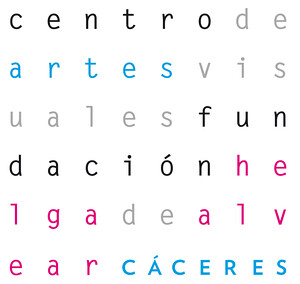April 29, 2016–April 9, 2017
Pizarro, 8
10003 Cáceres Extremadura
Spain
Hours: Tuesday–Saturday 10am–8pm
T +34 927 62 64 14
F +34 927 22 68 53
general@museohelgadealvear.com
In truth, every time one speaks of the various forms adopted or potentially adopted by Helga de Alvear’s art collection in Cáceres, one ought also to talk of the significance of the fact that this collection is precisely in Cáceres. What I am about to say may seem strange, but in my view one of the great values of a collection of contemporary art in a place like Cáceres is the fact that the city, the context, is mildly indifferent to the presence of this impressive family of works that express not one way of understanding art but many. What I call “indifference” is a different way of being receptive to the importance of something, though it must not necessarily be seen as the continuation of a bourgeois taste. Places like Cáceres and many others scattered across Europe signify much more today than they did during the years of industrial growth. Strange as it may seem, these communities possess a value for the future which, of course, cannot easily be translated in the immediate or short term in employment solutions or new booms but which is due to the fact that they are not an integral part of the logic of modern growth, nor its taste, nor its understanding of new values and forms of life.
The indifference to which I refer here is mutual. It is a virtue shared by works and public, a virtue to which poor political philosophy, which we have been subjected to for decades, and demagogy, its consequence, have been systematically disloyal. A couple of examples might serve to illustrate my point. Cultivating interest has a series of philosophical and public implications to do with a straightforward idea of consensus, of public service and of civil responsibility that far exceeds the possibilities our middle class and the mission of art and artists. Gaining the interest of the general public is not nor has it ever been synonymous with a complex project intended to pay attention to forms of complex thinking difficult to grasp in one “visit,” but to “monumentalise” increasing numbers of modern, and today archaic, ways of presenting works to the public.
At this point in my thinking, the question now is what is the common denominator of this presentation. I have for some time been mulling over an idea that I call the theory of the “supergroup,” i.e. the possibility works have of existing in more than just a chronological, aesthetic and formal framework. Understanding that, for example, a collection like Helga de Alvear’s, in a place like Cáceres today, functions almost better if it is seen as a unique opportunity to introduce into a homogenous group, conditioned by numerous cultural and economic affects and disaffects, another group, Helga’s collection of pieces, which has the capacity to remind us of the importance of inventing life outside the norms and parameters that determine our vision of the world.
This selection, which is presented in the space, generating a particular dialogue, and in the catalogue, documenting this presence, is a specific, one-off version of the “supergroup” that the totality of the collection represents for me. A collection is very difficult to explain in descriptive terms. I see it as a desire that never ceases to combine forces and languages, minds and images which, by virtue of their co-existence, are capable of invoking a primordial feeling that we usually forget: the importance of motivation. A motivation without a clear direction, without a principle of exploitation, but as the difficult and necessary preparation for accepting differences that cannot be expressed in accordance with general laws. The “supergroup” is a term chosen because in its banality/simplicity, it indicates a dramaturgy closer to gregariousness and to the productive absurdity of someone who is ignorant but wants to live communally and who distances himself from the desire to create a univocal feeling of what the future of culture is. A future that depends on an affect that may occur, not so much due to truly assimilating what art wants, what the institution expresses with it, but due to the greatness of having understood the importance of this constant exercise in generating differences within a tradition pursued by artists.
It is now that we need imagination. We have the most important thing: people, the artistic community. What we lack are new dramaturgies, new modes of connecting them with the supergroup. And so, in each room, the works observe each other and us and they influence our feelings, but also our thoughts about the possibilities that exist in a place that is different and which, because of that, has to imagine its present and its future in a different way.
Chus Martínez—Curator


